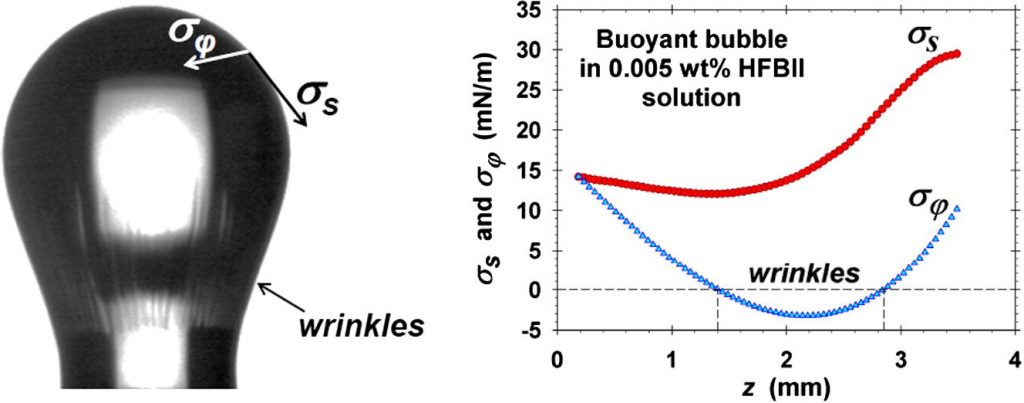Capillary meniscus dynamometry – Method for determining the surface tension of drops and bubbles with isotropic and anisotropic surface stress distributions

The stresses acting in interfacial adsorption layers with surface shear elasticity are, in general, anisotropic and non-uniform. If a pendant drop or buoyant bubble is covered with such elastic layer, the components of surface tension acting along the “meridians” and “parallels”, σs and σϕ, can be different and, then, the conventional drop shape analysis (DSA) is inapplicable. Here, a method for determining σs and σϕ is developed for axisymmetric menisci. This method, called ‘capillary meniscus dynamometry’ (CMD), is based on processing data for the digitized drop/bubble profile and capillary pressure. The principle of the CMD procedure for data processing is essentially different from that of DSA. Applying the tangential and normal surface stress balance equations, σs and σϕ are determined in each interfacial point without using any rheological model. The computational procedure is fast and could be used in real time, during a given process. The method is applied to determine σs and σϕ for bubbles and drops formed on the tip of a capillary immersed in solutions of the protein HFBII hydrophobin. Upon a surface compression, meridional wrinkles appear on the bubble surface below the bubble “equator”, where the azimuthal tension σϕ takes negative values. The CMD method allows one to determine the local tensions acting in anisotropic interfacial layers (films, membranes), like those formed from proteins, polymers, asphaltenes and phospholipids. The CMD is applicable also to fluid interfaces (e.g. surfactant solutions), for which it gives the same surface tension as the conventional methods.

